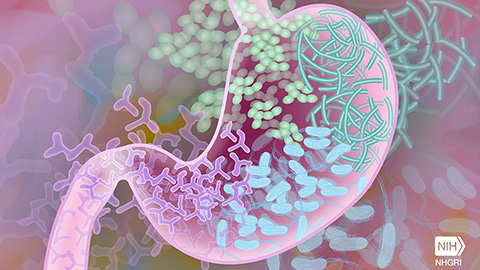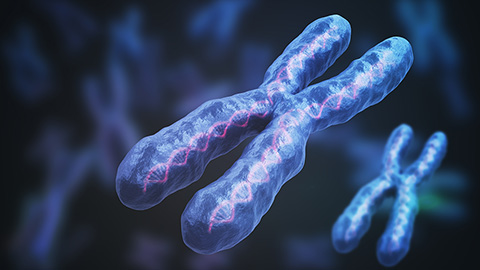MCP: Wasp venom causes slow burn in roach brain
While most of its parasitic cousins are content to paralyze their prey with a quick thoracic sting, lay an egg in or on the immobilized critter and abandon it to its fate as living larval foodstuff, the jeweled wasp excels in cruelty. Once it has immobilized a roach temporarily with an initial sting to the thorax, the wasp takes up to two minutes to guide two additional stings to the roach’s head ganglia. There, it unleashes a neurochemical cascade that instills hypokinesia, overriding the roach’s instinct to flee with an irresistible drive to laze about and groom. The wasp then grabs the distracted roach by its antennae and guides it to a burrow, where it will endlessly primp until a wasp larva hatches. As the puny parasite’s primary food source, the roach will be kept alive as long as possible, with its least essential organs consumed first.
 An emerald wasp drags a cockroach immobilized by the wasp’s venom into a burrow. A parasitic wasp larva will hatch about three days later and begin to feed on the roach. Deven Dadbhawala/FLICKR For an American cockroach, there is no terror like a jeweled wasp.
An emerald wasp drags a cockroach immobilized by the wasp’s venom into a burrow. A parasitic wasp larva will hatch about three days later and begin to feed on the roach. Deven Dadbhawala/FLICKR For an American cockroach, there is no terror like a jeweled wasp.
While the compound that causes the initial paralysis is mostly the ubiquitous neuroinhibitor GABA, the makeup of the second compound, or compounds, is less understood. To figure out what allows the wasp’s venom to override the roach’s survival instincts for several days, researchers in Michael Adams’ lab at the University of California, Riverside, subjected the enigmatic venom to RNA sequencing and proteomic analysis. They published the details of the venom components, which include hundreds of identified neurotransmitters, hormones and peptide precursors, in the journal Molecular & Cellular Proteomics.
“One wonders if there is a magic bullet that causes this hypokinesia or whether it is a consequence of a lot of different components of the venom working together,” Adams said.
Two of those components are the neurotransmitters tachykinin and corazonin, which have been implicated in behavior and locomotion. When the venom resides inside the acidic environment of the wasp’s venom apparatus, however, they’re present only in their precursor forms.
According to Ryan Arvidson, a postdoctoral researcher in Adams’ lab, one reason for the slow-burning activity of these and other peptides may be their gradual conversion to mature forms as their environmental pH rises to become more neutral within a cockroach.
“There’s some support for the idea that we have this pH-dependent activation of these enzymes that could act like a time-release capsule, slowly generating bioactive peptides over time,” Arvidson said.
Another time-release venom component the researchers found was a ligand for the Toll receptor Spaetzle, which is involved in the activation of NF-kappaB homologs, a protein complex implicated in synaptic transmission in the brain.
“It was interesting because not only was Spaetzle in there, but a serine protease that activates Spaetzle is in the venom, and a serine protease that activates that serine protease is in the venom,” Arvidson said. “It looks like it injects the entire activation cascade of Spaetzle into the brain.”
The functions of all these already-defined neurotransmitters in the wasp venom aren’t exactly clear. In future experiments, Adams and Arvidson hope to explore the mechanisms by which tachykinin, corazonin and Spaetzle interact with the hundreds of other proteins in the venom to suppress the roach’s flight instinct reversibly while leaving intact its ability to walk, swim and fly in a wind tunnel.
“Now that we’ve laid the foundation for what the venom proteome is, we can start asking more hypothesis-based questions,” Arvidson said. “As far as I know, corazonin and another hormone called eclosion hormone are not really implicated in adult insects’ central nervous system activity, specifically with regard to locomotion.
“The wasp venom has pointed us in directions that could answer questions in neuroscience in general, in signaling systems that were previously not understood or underappreciated.”
Enjoy reading ASBMB Today?
Become a member to receive the print edition four times a year and the digital edition monthly.
Learn moreGet the latest from ASBMB Today
Enter your email address, and we’ll send you a weekly email with recent articles, interviews and more.
Latest in Science
Science highlights or most popular articles

Bacteriophage protein could make queso fresco safer
Researchers characterized the structure and function of PlyP100, a bacteriophage protein that shows promise as a food-safe antimicrobial for preventing Listeria monocytogenes growth in fresh cheeses.

Building the blueprint to block HIV
Wesley Sundquist will present his work on the HIV capsid and revolutionary drug, Lenacapavir, at the ASBMB Annual Meeting, March 7–10, in Maryland.

Gut microbes hijack cancer pathway in high-fat diets
Researchers at the Feinstein Institutes for Medical Research found that a high-fat diet increases ammonia-producing bacteria in the gut microbiome of mice, which in turn disrupts TGF-β signaling and promotes colorectal cancer.

Mapping fentanyl’s cellular footprint
Using a new imaging method, researchers at State University of New York at Buffalo traced fentanyl’s effects inside brain immune cells, revealing how the drug alters lipid droplets, pointing to new paths for addiction diagnostics.

Designing life’s building blocks with AI
Tanja Kortemme, a professor at the University of California, San Francisco, will discuss her research using computational biology to engineer proteins at the 2026 ASBMB Annual Meeting.

Cholesterol as a novel biomarker for Fragile X syndrome
Researchers in Quebec identified lower levels of a brain cholesterol metabolite, 24-hydroxycholesterol, in patients with fragile X syndrome, a finding that could provide a simple blood-based biomarker for understanding and managing the condition.

